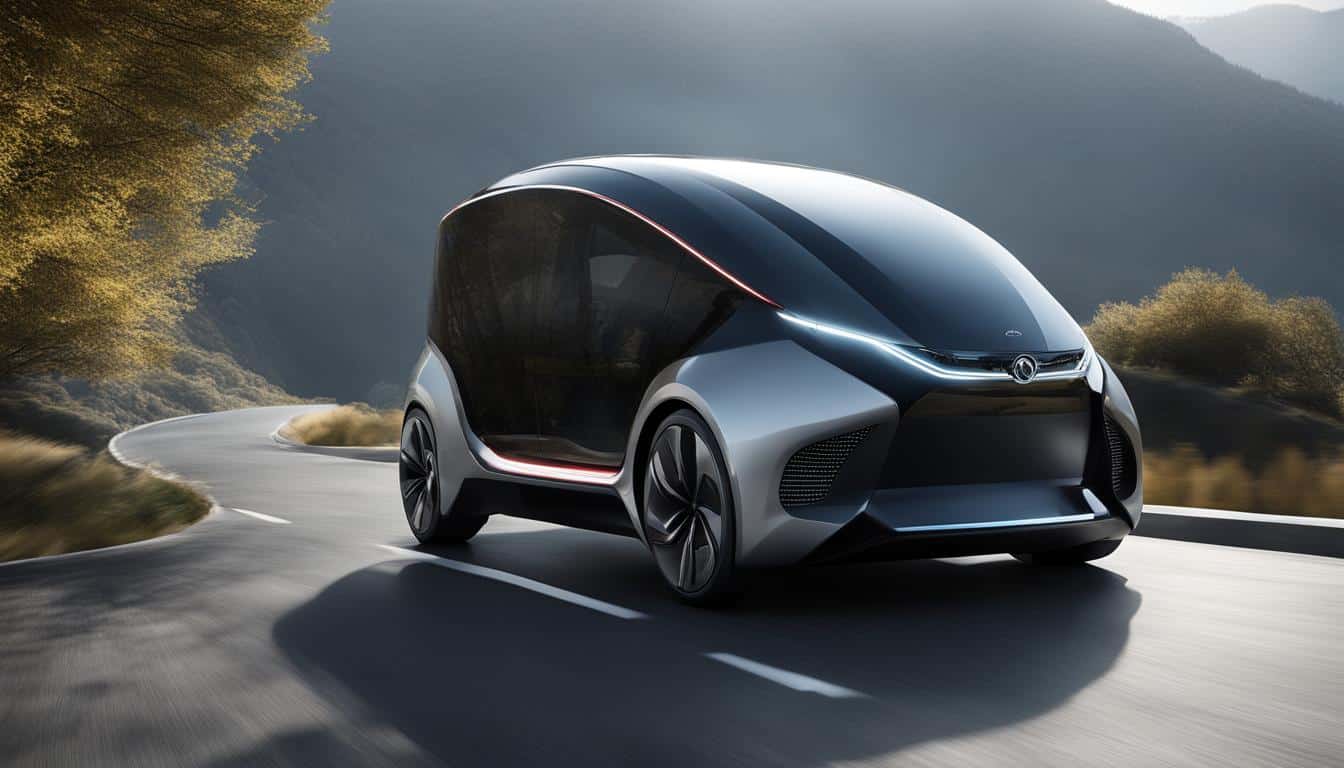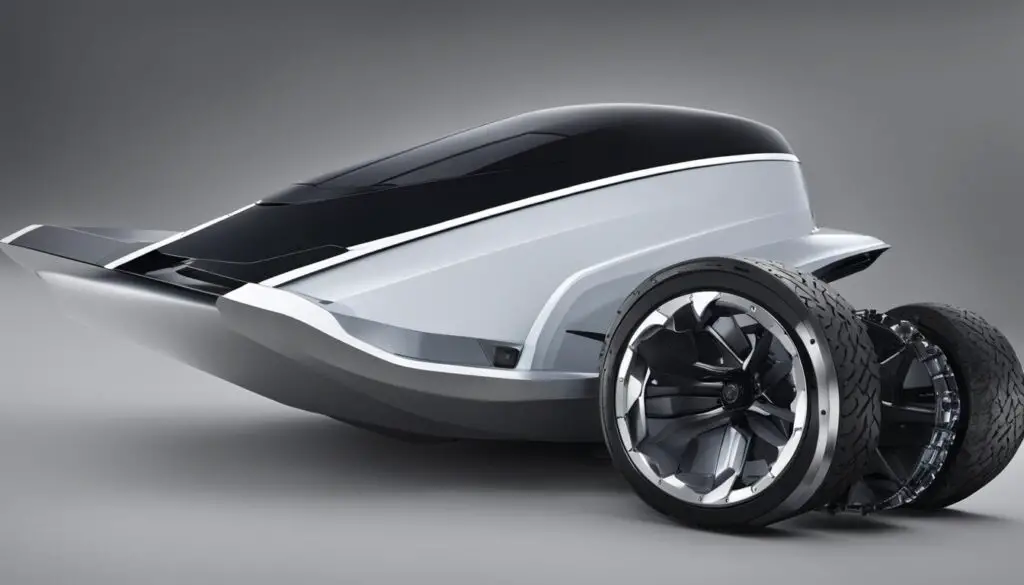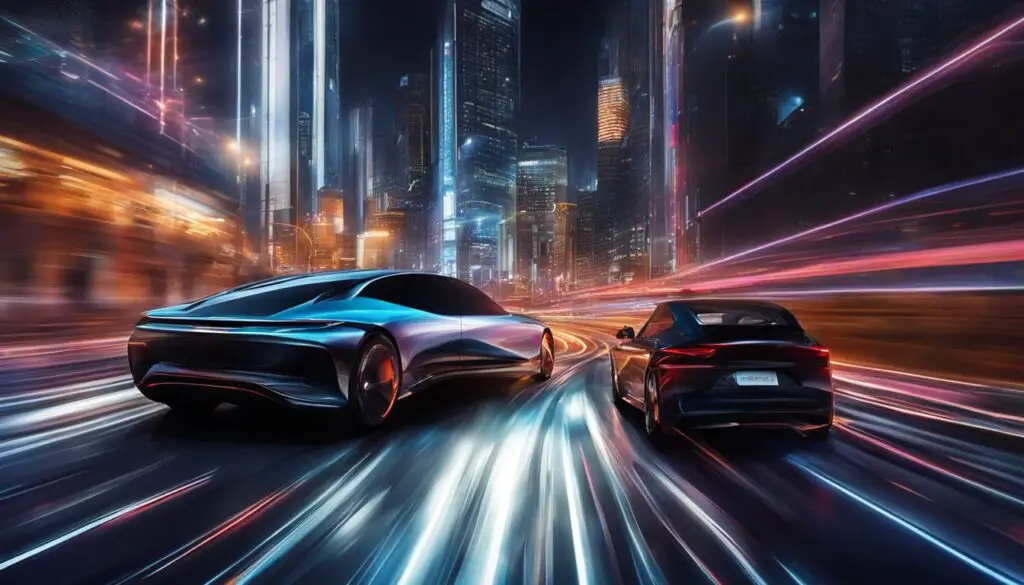
Innovative Safety Features in Future Vehicle Design
When it comes to the future of vehicle design, safety innovations are at the forefront of advancements that prioritize enhanced protection for drivers and passengers. Brands like Iridium Communications Inc. and Volvo Penta are revolutionizing the automotive and marine industries with groundbreaking technologies.
Iridium Communications Inc. has introduced Project Stardust, a solution that integrates satellite connectivity into future vehicle designs. By uploading NB-IoT NTN standards into its satellite network, Iridium ensures global coverage for safety and emergency incidents. This integration allows standardized devices, such as smartphones and cars, to offer high-quality proprietary and standardized direct-to-device services.
Volvo Penta, on the other hand, has unveiled the IPS Professional Platform, a game-changing technology for superyachts and commercial marine vessels. This platform enhances comfort, performance, and sustainability with features like Assisted Docking and a professional-level Glass Cockpit helm display.
As the automotive industry evolves, Mobilisights is leveraging Stellantis vehicle data to develop innovative connected vehicle applications. With access to embedded data from 14 Stellantis brands, Mobilisights is improving telematic services, enabling personalized insurance products, and simplifying EV logistics to enhance safety and efficiency.
Key Takeaways
- The integration of satellite connectivity in future vehicle designs enhances safety and emergency capabilities globally.
- Volvo Penta’s IPS Professional Platform offers unmatched comfort, performance, and sustainability for marine vessels.
- Mobilisights leverages Stellantis vehicle data to create smart solutions for connected vehicle applications.
Iridium’s Global Coverage and Reliability
Iridium’s satellite constellation operates in low-Earth orbit (LEO), providing a significant competitive advantage over other satellite networks. Unlike geostationary systems, which are limited by line-of-sight constraints and power requirements, Iridium’s LEO satellites offer unparalleled global coverage and reliability. This means that no matter where you are on Earth, you can count on Iridium’s network to keep you connected.
Certified to provide safety of life services, Iridium is known for its unwavering commitment to reliability and connectivity. The company supports approximately 1,300 SOS and emergency incidents per year, proving its dedication to being a trusted partner in critical situations. Whether it’s a remote area or a high-risk environment, Iridium’s network ensures that help is just a call away.
With Iridium’s satellite constellation in place, users can rely on uninterrupted communication and global coverage, even in the most challenging situations. This level of reliability is unmatched by any other satellite network, making Iridium the go-to choice for industries that require constant connectivity and dependable service.
Key Features of Iridium’s Global Coverage and Reliability:
- Comprehensive coverage worldwide, including remote and underserved areas
- Certified safety of life services for emergency situations
- Uninterrupted communication and connectivity
- Proven track record in supporting emergency incidents
| Benefits of Iridium’s Global Coverage and Reliability |
|---|
| 1. Worldwide Reach |
| 2. Reliable Communication |
| 3. Safety and Security |
| 4. Business Continuity |
Volvo Penta’s IPS Professional Platform
Volvo Penta has unveiled its IPS Professional Platform, a groundbreaking technology and propulsion platform for superyachts and commercial marine vessels. This platform builds on the company’s proven Inboard Performance System (IPS) and Electronic Vessel Control (EVC) technology, offering unmatched comfort, performance, and sustainability.
The IPS Professional Platform empowers vessels with up to eight power sources, including traditional internal combustion engines (ICE), hybrid solutions, and fully electric power sources. This enables operators to choose the most suitable power configuration based on their specific needs and environmental considerations. With the flexibility of multiple power options, Volvo Penta’s IPS Professional Platform represents a significant step towards a greener and more sustainable marine industry.
Features of the IPS Professional Platform
- Assisted Docking: Volvo Penta’s IPS Professional Platform incorporates Assisted Docking, a groundbreaking feature that simplifies the docking process. Through advanced GPS-based technology, the platform provides precise positioning and automatic alignment, allowing operators to effortlessly dock their vessels with accuracy and ease.
- Dynamic Positioning: Another remarkable feature of the IPS Professional Platform is Dynamic Positioning. This feature employs advanced algorithms and integrated sensors to automatically maintain the vessel’s position and heading, even in challenging conditions such as strong currents or windy environments. Dynamic Positioning ensures enhanced safety and stability, making it ideal for offshore operations and maintaining precise positions during activities like crew transfers.
The IPS Professional Platform also offers a professional-level Glass Cockpit helm display, providing operators with a comprehensive and intuitive interface to monitor and control various aspects of their vessel’s performance. This advanced display consolidates critical information, including power distribution, propulsion status, and navigation data, into a single user-friendly interface.
With Volvo Penta’s IPS Professional Platform, marine operators gain access to an array of smart solutions that not only optimize performance but also elevate the overall on-water experience. This advanced technology sets a new benchmark for propulsion systems in the marine industry and reinforces Volvo Penta’s commitment to innovation, sustainability, and customer satisfaction.

Table: Comparative Features of Volvo Penta’s IPS Professional Platform
| Features | Benefits |
|---|---|
| Multi-power capability | Greater versatility and flexibility in choosing power sources |
| Assisted Docking | Simplifies docking process and improves safety |
| Dynamic Positioning | Ensures vessel stability and precise positioning |
| Glass Cockpit helm display | Comprehensive interface for monitoring and control |
Mobilisights’ Impact on Connected Vehicle Applications
Mobilisights, leveraging Stellantis vehicle data, is revolutionizing connected vehicle applications and enhancing efficiencies in the automotive ecosystem. With access to embedded data from 14 Stellantis brands, Mobilisights has developed smart solutions that are transforming the way vehicles are managed and operated.
Through its advanced data analytics and innovative technology, Mobilisights provides a range of benefits for various stakeholders in the automotive industry. Fleet operators can leverage Mobilisights’ solutions to streamline fleet management, optimize route planning, and improve overall operational efficiency.
One of the key areas where Mobilisights is making a significant impact is in the realm of customized insurance offers. By analyzing Stellantis vehicle data, Mobilisights can provide personalized insurance products tailored to individual drivers’ behavior, resulting in fairer pricing and better coverage options.
Moreover, Mobilisights’ smart solutions enable efficient charging of electric vehicles (EVs). By utilizing real-time data on charging station availability and optimizing charging schedules, Mobilisights helps EV owners maximize their charging efficiency while minimizing waiting times.
Mobilisights’ commitment to safety and efficiency extends beyond its technology offerings. The company actively collaborates with industry leaders and startups in the mobility services sector to foster innovation and shape the future of connected vehicles. This collaborative approach ensures that Mobilisights stays at the forefront of advancements in smart mobility solutions.
“Mobilisights’ integration of Stellantis vehicle data has brought about transformative changes in the automotive industry, revolutionizing how vehicles are managed and operated. By leveraging advanced data analytics and cutting-edge technology, Mobilisights has become a key player in enhancing efficiency and safety in the connected vehicle ecosystem.” – [Insert Expert Name], Mobility Services Analyst
Elevating Safety and Efficiency in the Automotive Ecosystem
Mobilisights’ smart solutions play a crucial role in improving telematic services, making vehicles safer and more reliable. By monitoring vehicle data in real-time, Mobilisights can detect and alert drivers of potential safety risks, such as mechanical issues or erratic driving behavior. This proactive approach to vehicle safety enhances road and driver safety while reducing the risk of accidents.
Additionally, Mobilisights’ collaboration with Stellantis brands enables seamless integration of their smart solutions into the existing automotive infrastructure, ensuring compatibility and ease of adoption. This integration allows for the seamless flow of data between vehicles, infrastructure, and the cloud, enabling real-time insights and smarter decision-making for all stakeholders involved.
| Benefits of Mobilisights’ Connected Vehicle Solutions |
|---|
| Enhanced fleet management |
| Customized insurance offers based on driving behavior |
| Efficient charging of electric vehicles |
| Improved telematic services for safety and reliability |
As the automotive ecosystem continues to evolve, Mobilisights remains at the forefront of leveraging Stellantis vehicle data to create smart solutions that enhance efficiency, safety, and overall user experience. With its focus on innovation and collaboration, Mobilisights is driving the transformation of connected vehicle applications and shaping a smarter future in mobility.

Future-Proof Vessels with Dual-Power Configuration
Volvo Penta’s IPS Professional Platform offers a versatile dual-power configuration, allowing vessels to be future-proofed for evolving technology. Vessels designed with this architecture can initially run on traditional internal combustion engines (ICE) using renewable fuels, such as HVO or renewable diesel. In the future, these vessels can be upgraded with hybrid and electric power sources without the need for redesign or scrapping. This forward-thinking approach ensures that vessels can adapt to new power sources and contribute to sustainability goals while maintaining efficiency and performance.
Transitioning to alternative power sources is a crucial step towards creating a more sustainable maritime industry. Volvo Penta’s dual-power configuration enables vessels to navigate this transition seamlessly, without costly modifications or compromises on performance.
The Advantages of Dual-Power Configuration
The dual-power configuration offered by Volvo Penta’s IPS Professional Platform comes with several notable advantages:
- Flexibility: Vessels equipped with the dual-power configuration can easily switch between traditional combustion engines and hybrid or electric power sources, depending on availability, regulations, or environmental considerations.
- Economical: Upgrading to hybrid or electric power sources can result in long-term cost savings through reduced fuel consumption and maintenance requirements. It also positions vessel operators to take advantage of potential financial incentives and grants for adopting sustainable technologies.
- Environmental Benefits: By embracing dual-power configurations, vessels can significantly reduce their carbon footprint and contribute to global sustainability efforts. Electric and hybrid power sources produce fewer emissions, improving air quality and protecting marine ecosystems.
- Improved Resilience: As the maritime industry continues to evolve, regulations and market demands may require vessels to incorporate greener technologies. With a dual-power configuration in place, vessels can easily adapt to emerging trends without the need for costly retrofits or replacements.
“Volvo Penta’s dual-power configuration ensures that vessels remain versatile and adaptable to technological advancements, positioning them as sustainable and future-proof investments for shipowners.”
Investing in future-proof vessels that embrace dual-power configurations aligns with the industry’s growing focus on sustainability. Such vessels reduce dependency on fossil fuels and facilitate the integration of renewable energy sources, creating a more environmentally responsible and economically viable maritime sector.
Conclusion
In conclusion, the future of vehicle design is witnessing remarkable safety innovations driven by the groundbreaking technologies offered by industry leaders such as Iridium Communications Inc. and Volvo Penta. The integration of satellite connectivity into standardized devices is enabling enhanced safety and emergency capabilities on a global scale. By leveraging NB-IoT NTN standards and its operational satellite network, Iridium Communications Inc. is redefining safety standards with its Project Stardust, ensuring low-latency user experience and global coverage for safety and emergency incidents.
Moreover, Volvo Penta’s IPS Professional Platform is transforming the marine industry by introducing a flexible propulsion system that can support multiple power sources. This innovation revolutionizes vessel design, enabling future-proof and sustainable options. Vessels equipped with this platform can initially operate using traditional internal combustion engines (ICE) fueled by renewable alternatives like HVO or renewable diesel. As technology progresses, these vessels can be seamlessly upgraded to incorporate hybrid and electric power sources, without the need for extensive redesign or scrapping. This forward-thinking approach not only enhances sustainability but also maintains operational efficiency and performance.
As the automotive ecosystem evolves, Mobilisights is at the forefront of leveraging Stellantis vehicle data to develop smart solutions that enhance efficiency and safety for all road users. By accessing embedded data from 14 Stellantis brands, Mobilisights creates innovative applications for fleet management, personalized insurance products, efficient electric vehicle charging, and improved telematics services. Through collaboration with industry leaders and startups, Mobilisights is shaping the future of mobility by continually exploring new possibilities and setting higher industry standards for safety and sustainability.
With safety as the paramount concern, companies like Iridium Communications Inc., Volvo Penta, and Mobilisights are paving the way for a future where vehicles are smarter, safer, and more sustainable. By embracing cutting-edge technologies and integrating them seamlessly into vehicle design, these companies set new benchmarks in safety, efficiency, and global connectivity. As the industry progresses, these innovations will continue to shape the future of mobility and create a safer and more sustainable environment for all.
FAQ
What is Project Stardust?
Project Stardust is a new standards-based solution introduced by Iridium Communications Inc. that aims to revolutionize safety in future vehicle design by uploading NB-IoT NTN standards into its operational satellite network.
What services will Iridium offer through Project Stardust?
Through Project Stardust, Iridium will offer high-quality proprietary and standardized direct-to-device (D2D) and IoT services, including support for 5G NTN messaging and SOS capabilities for smartphones, tablets, cars, and other consumer applications.
What are the advantages of Iridium’s satellite constellation?
Iridium’s satellite constellation operates in low-Earth orbit (LEO), providing a competitive advantage over other satellite networks. Unlike geostationary systems, LEO satellites do not face line-of-sight limitations or significant power requirements, ensuring reliable global coverage everywhere on Earth.
How many SOS and emergency incidents does Iridium support annually?
Iridium supports approximately 1,300 SOS and emergency incidents per year, establishing itself as a trusted partner for safety and security.
What is Volvo Penta’s IPS Professional Platform?
Volvo Penta’s IPS Professional Platform is a groundbreaking technology and propulsion platform designed for superyachts and commercial marine vessels. It builds upon the company’s proven Inboard Performance System (IPS) and Electronic Vessel Control (EVC) technology, offering unmatched comfort, performance, and sustainability.
What power sources are supported by Volvo Penta’s IPS Professional Platform?
Volvo Penta’s IPS Professional Platform allows vessels to have up to eight power sources, including traditional internal combustion engines (ICE), hybrid solutions, and fully electric power sources.
What features does Volvo Penta’s IPS Professional Platform offer?
Volvo Penta’s IPS Professional Platform features include Assisted Docking, Dynamic Positioning, and a professional-level Glass Cockpit helm display, all of which enhance the on-water experience for operators.
How is Mobilisights revolutionizing connected vehicle applications?
Mobilisights is leveraging Stellantis vehicle data to revolutionize connected vehicle applications and enhance efficiencies in the automotive ecosystem. They have developed innovative solutions for fleets, customized insurance offers, and efficient charging of electric vehicles.
What solutions does Mobilisights provide?
Mobilisights provides solutions for fleet management, improved telematic services, personalized insurance products, and simplified EV logistics, all aimed at enhancing safety and efficiency in the automotive industry.
How does the dual-power configuration of Volvo Penta’s IPS Professional Platform future-proof vessels?
Vessels designed with Volvo Penta’s IPS Professional Platform can initially run on traditional internal combustion engines (ICE) using renewable fuels. In the future, they can be upgraded with hybrid and electric power sources without the need for redesign or scrapping, ensuring they can adapt to new power sources and contribute to sustainability goals.
Source Links
- https://investor.iridium.com/2024-01-10-Iridium-Unveils-Project-Stardust-Developing-the-Only-Truly-Global,-Standards-Based-IoT-and-Direct-to-Device-Service
- https://www.stellantis.com/en/news/press-releases/2024/january/empowering-customers-a-year-of-major-advances-in-mobilisights-mobility-data
- https://finance.yahoo.com/news/volvo-penta-advances-intelligence-decarbonization-131300322.html
